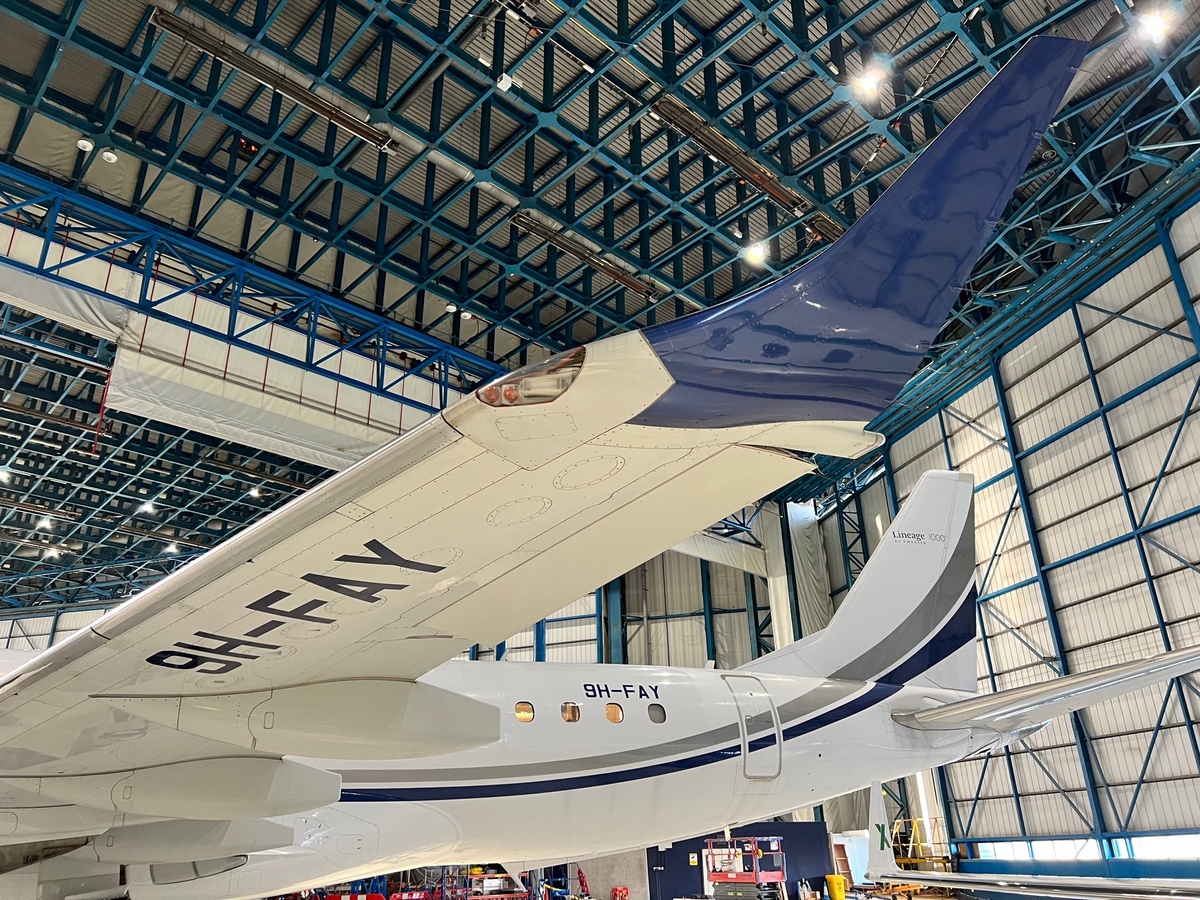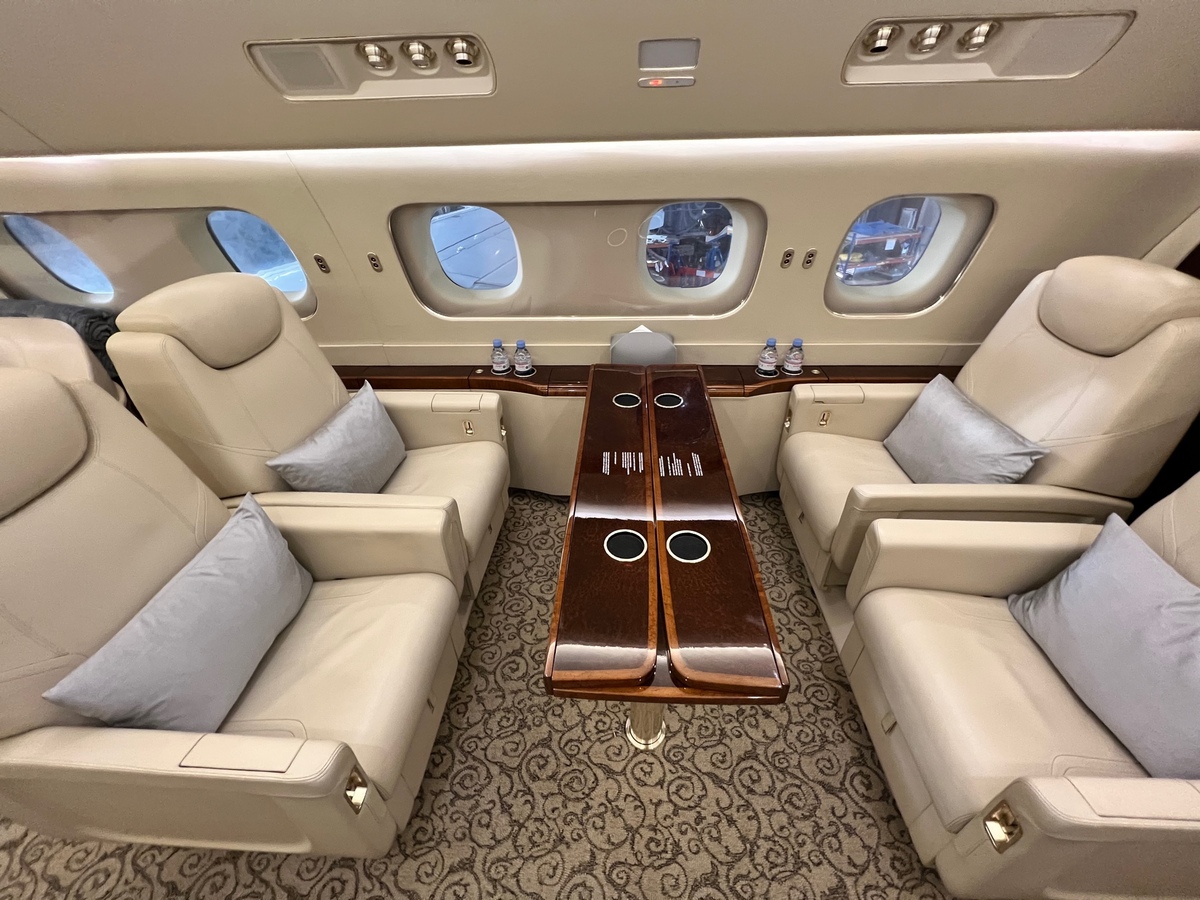I go inside the world of private jet charters with a tour of the AirX hangar at Stansted
Links on Head for Points may support the site by paying a commission. See here for all partner links.
We don’t write much about private jets on Head for Points but, like any aviation enthusiast, I find them fascinating and can’t resist taking a look when I have the chance.
In the past I’ve taken a look at the Signature ELITE private jet terminals that you can book for commercial flights at both Gatwick and Luton. In 2020 I also enjoyed a 25-minute flight aboard Hahn Air’s Cessna Citation private jet, which you could book for £250.
Back in 2017, when ‘scheduled’ private jet services were popular, Anika was on Surf Air’s launch flight from London City to Zurich (now discontinued) and Rob tried out a Citation CJ2 operated by JetSmarter (also now discontinued).
I was invited to Stansted by AirX, a private jet charter company, to have a tour of their hangar and aircraft. The avgeek inside me jumped at the chance, and hopefully you will find it interesting too.
As it turns out, I got more than I bargained for. Chairman and majority shareholder John Matthews ended up gaving me a fascinating overview of the private jet chartering industry.
How do you get to own a private jet chartering business?
Given the vast sums of money required to buy and operate aircraft, even the smaller ones used in private jet fleets, I assumed that a company such as AirX could only have been founded by someone whose family had very deep pockets.
I was wrong. Chairman John Matthews is well spoken but his formal education ends there. Growing up in a perfectly average family, his parents divorced and his mother married a British Airways engineer, who would bring John to work with him.
This is what inspired his passion for aviation and led him to working at Red Hill Flight Services as a teenager, before deciding that what he really wanted to do was start his own airline at the grand old age of 19. It wasn’t fancy or particularity luxurious, but it worked until a falling out with his business partner left him unemployed and with no cash.
Purely by chance, he bumped into the former owner of AirX – a woman in the midst of a divorce, who now owned a charter airline up to its teeth in debt and on the verge of repossession. John promptly asked for a job and, with virtually nothing to lose, was put in charge of turning the airline around.
It seems to have worked. AirX has gone from being £4 million in debt with a turnover of £8 million a year to a 400-strong company with £150 million turnover a year. As the business grew John was able to raise funds to buy out existing shareholders and get majority ownership.
As you’d expect, the customer base includes corporations and governments, the entertainment industry (especially for music tours) and sports teams. One aircraft even has a dedicated physio area for athletes.
Old is gold
AirX operates a somewhat unique business model, in that it doesn’t buy new (or even new-ish) aircraft for its fleet.
Instead, what it does is snap up old aircraft that are otherwise unpopular with private jet charters and make their unique properties work for the business.
Take 9H-FAY, the aircraft I sat in when I spoke with John. This is an Embraer Lineage 1000, the private jet version of the E190. If you’ve ever flown on BA CityFlyer from London City or Southampton you’ll be familiar with it:
Embraer has built just 28 aircraft of this type thanks to lack of interest from the private jet sector. As a fairly large aircraft – it seats around 90 in commercial service – it’s a niche product that hasn’t been particularly popular. It doesn’t help that it has a fairly short range, especially when full with 19 guests on board.
AirX has put this to its advantage and is now the largest operator of the type in the world. The plane is almost as big as the business jets sold by Airbus and Boeing but is available at a much cheaper price on the second hand market.
Put another way, for the same money, you get an aircraft which is almost twice the size as the popular Bombardier Global business jet.
Either way, unless you need the niche performance of those aircraft, the Embraer Lineage will do just fine. When the vast majority of your flights are around the four hour mark, you don’t need the excess capacity of an ultra-long haul aircraft.
It looks smart too, with far better legroom than BA CityFlyer offers:
AirX has also taken old commercial airliners which have gone out of service and refitted them with its own cabins. Next to the Embraer was an ex-Delta plane that is almost ready to restart flying with AirX.
(For clarity, the TAP plane in the top photograph has not been bought by AirX – it was simply sharing the hangar space. AirX has its own in-house maintenance facility at Stansted and works on third party aircraft as well as its own fleet.)
Buying old and unpopular aircraft mean that AirX can keep costs low versus competitors who often buy new aircraft as an “investment”. That bubble may be about to burst.
If you were waiting for the opportune moment ….
John Matthews is a firebrand leader if ever I met one. It’s not like chatting with BA’s Sean Doyle or Virgin Atlantic’s Shai Weiss, who are primarily spokespeople for their companies and rarely stray from the company line.
In the 30 minutes or so of our chat onboard 9H-FAY, one of their newest aircraft, he gave me a whistle-stop introduction into the economics of the private jet industry. His main bugbear is VistaJet, his biggest competitor. Founded in 2004, Vistajet operates 73 ultra-long range business jets, most of which it has acquired as new.
John questions their business model:
Buying a $60 million jet [as Vistajet has] versus a $6 million jet competitor with the same cabin doesn’t make sense. That doesn’t work when you’re only flying 4 hours.
They have $2 billion of aircraft finance. Two of their aircraft are still more expensive than my entire fleet at AirX.
The hourly rate published in their accounts is $1,000 more per hour than me. Do you really want to take on $2 billion more in debt just so you can charge an extra $1,000 per hour?
John feels that VistaJet and other competitors are in a bubble, propped up by the ability to raise money easily in the pre-covid boom. He feels that the rest of the industry could be about to come crashing down around him – and when it does, it would be the perfect opportunity to expand his own fleet.
Said John:
The industry is going to take a massive downturn. There’s going to be a collapse of some large players and that is where AirX will have the right private equity partner to size and grow.
To do that I need a partner with a giant, so that at the right time I can say, “I need £400 million, we’re going”. And for that event the Noah’s Ark needs to be built by the time the flood starts.
So when does the flood start?
Well, it’s raining pretty hard at the moment.
To make it happen, John needs to find someone with deep pockets. The company has appointed Zeus Capital to help raise equity investment to expand the fleet further.
Whilst I’m not an expert in airline economics, what I can tell after my morning in the hangar is that – from the point of view of the customer – the AirX strategy seems to work. The cabins I saw freshly installed at the maintenance facility at Stansted look and feel like you are on a brand new aircraft.
Thank you to John and his team for their time, which gave me an insight into part of the aviation industry that remains a mystery to most of us.








 Rob
Rob 





Comments (50)